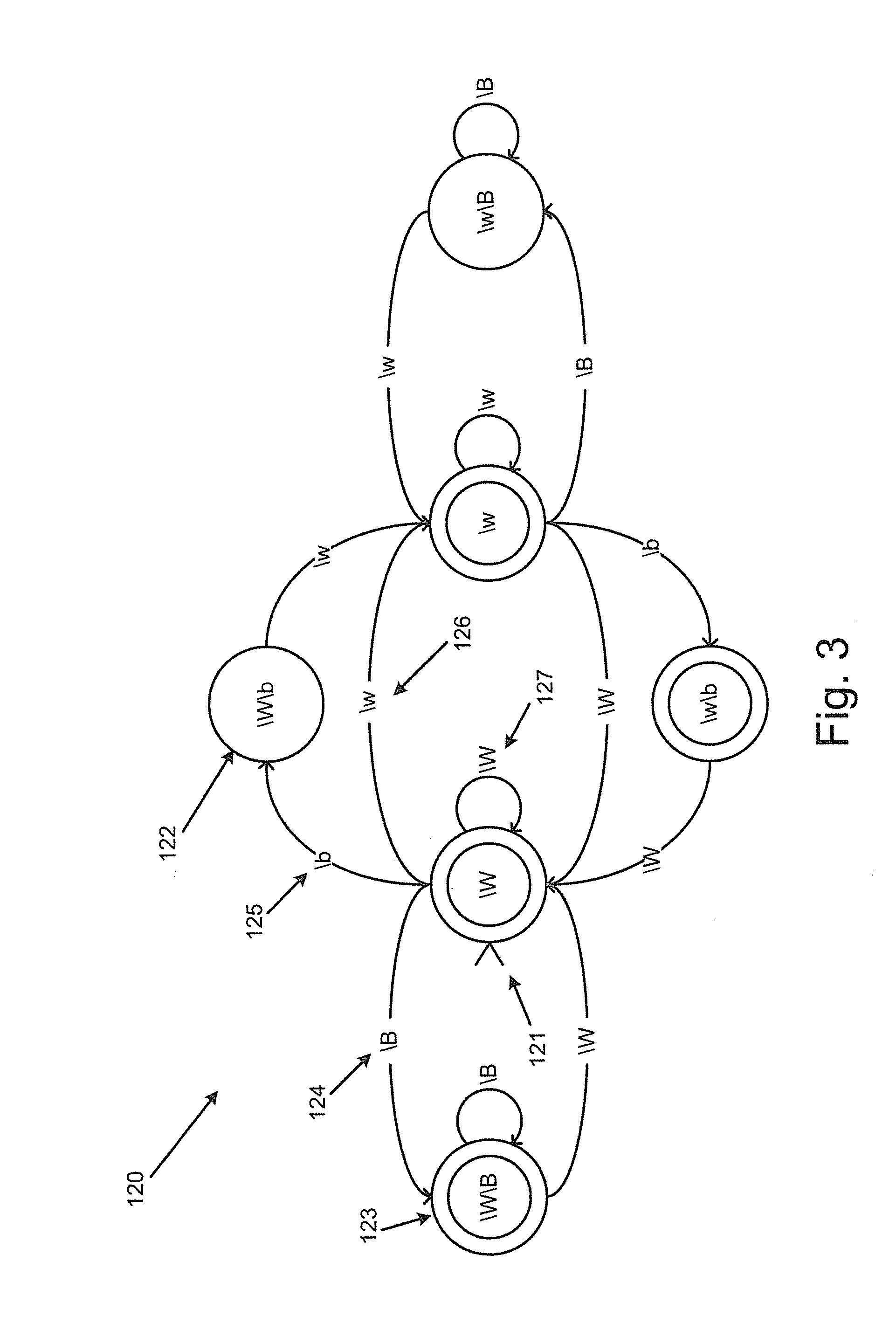

#Regex word boundary password
Password Pattern Matching in Python using Regular Expressions Web Scraping Title of a Web Page using Regular Expressions
#Regex word boundary code
Parsing Python Code to find all function and module names using Regular Expressions Making a Phonebook from Raw Text using Regular Expressionsįinding a URL(link) in text using Regular ExpressionsĬhecking Email Format using Regular ExpressionsĬonverting CamelCase to Normal Case using Regular Expressions To find a word that ends with, lets say 'e', we would write the character 'e' before the \b symbol (i.e to its immediate left as shown) as the ending character of a word would lie before the right boundary of a word. To find words ENDING with a certain character To find a word that begins with, lets say 'a', we would write the character 'a' after the \b symbol (i.e to its immediate right as shown) as the beginning character of a word would lie after the left boundary of a word (denoted in pink in above image). To find words BEGINNING with a certain character This class is generally used to find words which begin or end with a certain character. These boundaries are denoted in pink in the following image : spaces, commas, dashes etc.).These boundaries accurately represent the beginning and ending of a word, since most words are separated from other words by these non-alphanumeric characters(spaces, commas mostly). If you're using regex in a web project and would like a quick reference to the regex tokens available, use the regex cheat sheet above as well the tools mentioned to help simplify the regex expression building process.The \b class matches all boundaries between a word (alphanumeric) and a non-word(eg. RegexPal also provides you with a larger list of regex examples as well as a regex cheat sheet for reference. RegexPal - This tool also allows you to input your regex expression along with a test string to see if you receive the results you expect.You can consult the regex cheat sheet at the bottom of the page to verify which regex tokens you can use to achieve your desired outcome. Regex101 - Regex101 is quite comprehensive in terms of explaining what the regex expression is doing as well as identifying which parts of the test string correspond to which sections of the regex expression.Additionally, this tool also comes with a small regex cheat sheet and a few examples you can consult from the sidebar. You can also hover over each section of your regex expression to get an explanation of what each part is doing. Regexr - This tool allows you to input your regex expression as well as your text string and it will tell you if any matches are returned.All tools more or less perform the same functionality, however you may find one that you prefer over another. The following list provides tools you can use to verify, create, and test regex expressions. There are a few tools available to users who want to verify and test their regex syntax.

Therefore, with the above regex expression for finding phone numbers, it would identify a number in the format of 12, 123.123.1234, or 1231231234. Finally, the end of the string is defined by the $. The word boundary assertion is also used at the end of the expression. Group 3 (\b - Lastly, this section is slightly different in that it matches 4 digits instead of three.The domain name is then followed by a period \. Group 2 (+) - Next, the domain name must be matched which can use one or more digits, letters between a-z, periods, and hyphens.The expression is then followed by an sign. Group 1 (+) - In this section of the expression, we match one or more lowercase letters between a-z, numbers between 0-9, underscores, periods, and hyphens.Then the expression is broken into three separate groups. first part of the above regex expression uses an ^ to start the string. The following regex snippet will match a commonly formatted email address. To match a particular email address with regex we need to utilize various tokens. The following section contains a couple of examples that show how you can use regex to match a given string.

#Regex word boundary how to
However, you may still be a little confused as to how to put these tokens together to create an expression for a particular purpose. With the regex cheat sheet above, you can dissect and verify what each token within a regex expression actually does. Word Boundary (usually a position between /w and /W)


 0 kommentar(er)
0 kommentar(er)
